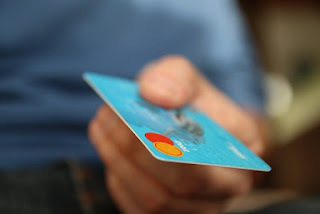How to Get out of Credit Card Debt By: Greg McKinney Mineola Texas
The average consumer has an estimated $5,200 in credit card debt. If that sounds like you, know that you aren’t alone. But also know that there are ways to get to of it.
The pandemic, loss of employment, and now inflation have made it hard for many households to stay afloat, but with the proper steps, you can get out of credit card debt and into financial security.
Create a Budget
The first step to getting out of credit card debt is to
create a budget. You don’t know how much you have to pay toward your debt until
you make and use a budget.
A budget is simply a map of your income and expenses. It shows your total income and expenses, how much you spend, and where you should cut back to reach your financial goals.
If a part of your budget isn’t earmarked for savings and credit card debt payoff, it’s time to rework your budget and make both a line item.
Cut Back on your Expenses
When you create your budget, you’ll likely find categories that you overspend. You may even find that you spend more than you make.
This is a great time to figure out where you can make changes. Here are some of the most common areas:
· Subscriptions – Look at your bank and credit card statements, specifically for subscriptions you don’t need or don’t use. We often sign up for free trials and then forget and pay for something we don’t use.
· Cable – It’s time to cut the cord and pay for a much cheaper streaming service. With this simple task, you might save $50 - $100 a month, leaving you more money for debt payoff.
· Food shopping – Make a list and stick to it when grocery shopping. Don’t shop on a whim or go to the store daily, grabbing things you need for that day’s meals. Instead, plan a week at a time, and don’t buy anything not on your list.
· Impulse buys – If you’re prone to buying whatever you see, create a 48-hour rule with yourself. When you see something, you want, but that wasn’t planned, give yourself 48 hours. If you’re still thinking about it after the 48 hours, work it into your budget, but chances are you’ll forget about it and save the money.
· Shop around for cheaper services – Find ways to save money on your necessary bills. For example, negotiate lower rates with your utility companies, shop around for more affordable car, house, and health insurance, ask for a lower APR on your credit cards, and consider refinancing your mortgage.
Paying off Credit Cards
Any money you saved from the steps above should go directly to your debt payoff plan. You could use any method, but we prefer the debt snowball method, a plan with quick wins motivating you to keep working hard to get out of debt.
Here’s how it works.
The Debt Snowball Method
Grab your most recent credit card statements. Then, jot down the balance of each card, ignoring the APR.
Organize the debts from lowest balance to highest. This is the order you’ll pay your debts off. Don’t worry about anything else except each card’s minimum payment.
Include each card’s minimum payment in your budget. This is non-negotiable; they are part of your fixed expenses until you pay them off.
Next, figure out the money you have budgeted for debt payoff. Remember, any money you saved using the techniques above should be included.
Add that money to the minimum payment on your first credit card. Keep doing this until you pay the with credit card off in full. Then, you’ve had your first quick win!
Next, take the total amount paid to the first credit card and add it to the minimum payment of the next credit card in line.
Keep doing this until you’ve created a debt snowball and gotten yourself out of credit card debt.
An Example of the Debt Snowball Method
Here’s how the debt snowball method works.
Jack has four credit cards with the following balances and minimum payments:
·
$1,200 balance with a $35 minimum payment
·
$500 balance with a $25 minimum payment
·
$1,900 balance with a $40 minimum payment
· $3,500 balance with a $55 minimum payment
Jack orders his cards in the following order:
·
$500
·
$1,200
·
$1,900
· $3,500
He makes the minimum payment to each account, which totals $155. So, let’s say Jack has $320 budgeted for monthly debt payoff.
That leaves him with $165 extra to put toward his debts. So, for the first few months, Jack pays $190 to the credit card with a $500 balance. In just about three months, Jack pays off his first credit card!
Next, he takes the $190 and adds it to the credit card with a $1,200 balance, paying $225 to that card ($190 + $35 minimum payment). He keeps the process going until he’s worked out of all credit card debt.
Final Thoughts
The debt snowball method makes it much easier to get out of credit card debt. Of course, it doesn’t happen overnight, just like your credit card debt didn’t happen instantly. However, with consistency, the method helps you pay off your debt.
The key is to make extra payments toward one card consistently to pay the balance down faster. Ignoring the APRs and focusing on the card with the lowest balance provides the quickest win, which usually provides the most motivation.
Don’t worry if you fall off the path because of an emergency or just life. The most crucial factor is that you get back on track, regularly paying your debts as soon as possible.



Comments
Post a Comment